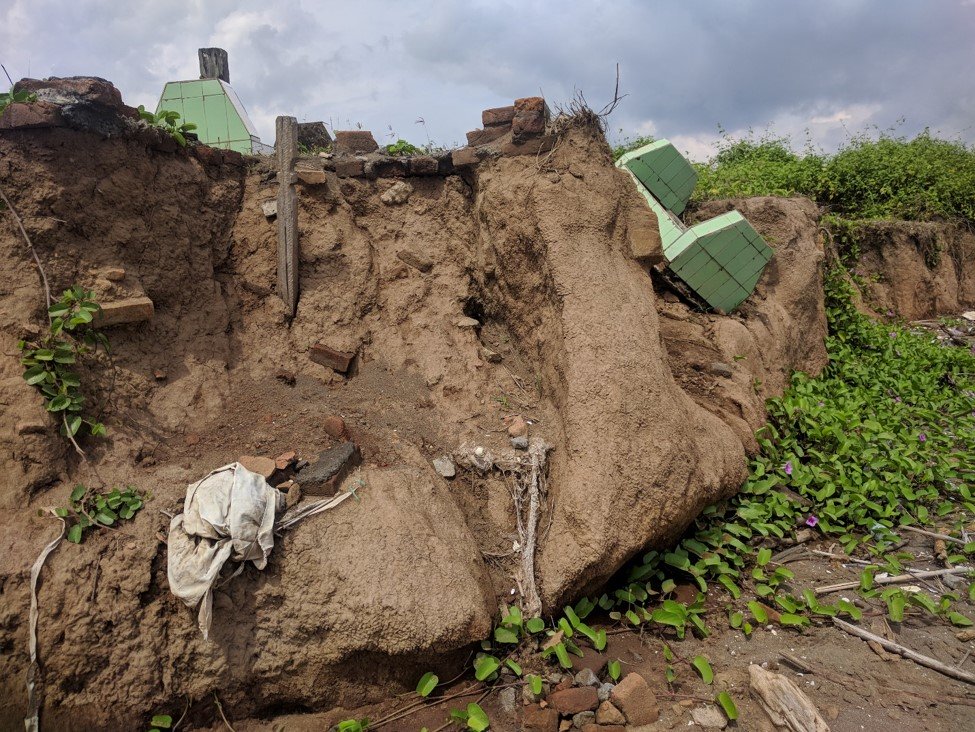intro
The fishing villages near Centre Point were not only confronted with an 80% reduced income, but also with the erosion of the coastline. There are not a lot of dikes or other man-made systems protecting the coast. But there are natural barriers. Coral reef, seagrass and sand ensure that the power of the waves decrease before they hit the shore. But as a result of the sand extraction one of those natural barriers was severely damaged. Because of that 21 houses were lost and 2 burial grounds partially disappeared into the sea.
A picture shows how a stretch of coastline under the cemetery has been swept away by the sea. Tombstones hanging down in a sharp angle, while a few meters away the remains of bodies from one of the affected graves are found. Of the 10 to 12 graves that were severely damaged, the residents were only able to save 3 bodies from the sea. The others have been lost.
“The people in those villages could not even begin to explain what the impact of this was. They just started to cry as they tried to tell us about the consequences of the sand extraction,” says Amien of WAHLI South Sulawesi. Together with Niels Hazekamp from Both ENDS he visited the villages this summer. They show the pictures of the damaged burial grounds. “Nobody came to help them. They had to get the bodies out of the sea themselves and give them a new burial ground from their own money.”
The cemetery has an important role in the local community. “Not only does it represent our history, standing for the fact that we have lived and died here for generations,” Amien explains. “But in Indonesia it’s also a tradition to visit the graves of your deceased loved ones once a year to thoroughly clean their plots and show respect to your ancestors. That is a very important moment every year.”





